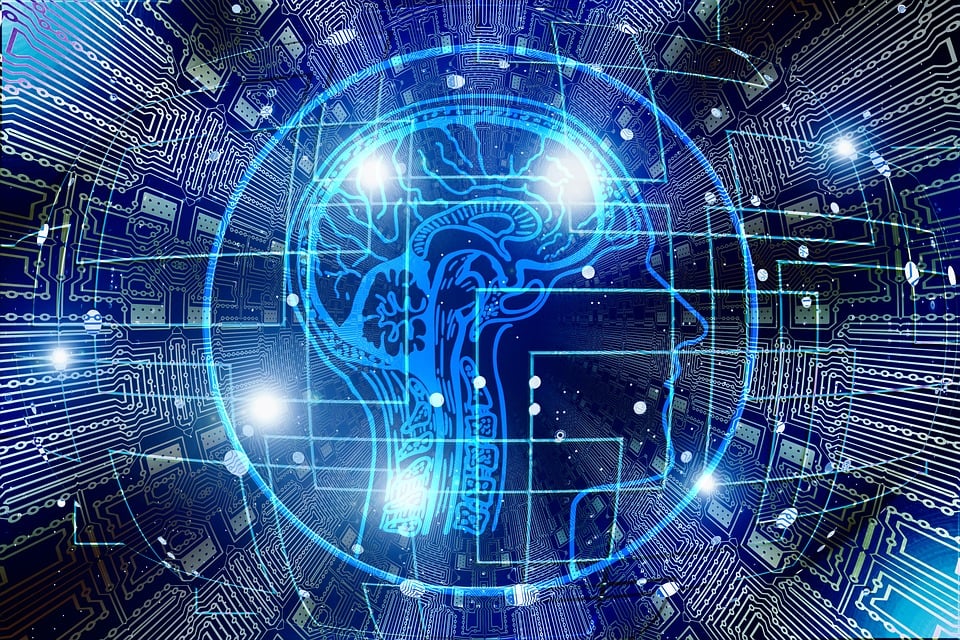
Over the past decade, two emerging technologies – generative artificial intelligence (AI) and autonomous drones – have rapidly advanced and shown immense promise for the future. Generative AI, which can create original content like text, images, audio, and video, has unlocked new possibilities for enhancing creativity and productivity. Meanwhile, autonomous drone technology has enabled innovative applications from package delivery to surveying and mapping. As these technologies continue to mature, they may profoundly impact various industries and our daily lives. This article will provide an overview of generative AI and autonomous drones, discuss their current capabilities and limitations, examine their potential benefits and risks, and explore how they may transform the future as they converge.
Understanding Generative AI
What is generative AI?
Generative AI refers to machine learning techniques that allow systems to create new, original content by learning from vast datasets. Unlike most AI which is trained to analyze and categorize existing data, generative models can produce artifacts like natural language text, image generation, music synthesis, and video creation. While earlier algorithms relied on hand-engineered rules, modern generative AI uses deep learning to build models that can learn complex distributions over data. Prominent examples include generative adversarial networks (GANs), variational autoencoders (VAEs), autoregressive models like GPT-3, and diffusion models. When trained on diverse human-created datasets, generative models can reach impressive levels of output quality and creativity.
Key capabilities
– Natural language processing: Models like GPT-3 can generate cohesive, coherent text tailored to specific prompts and contexts. They demonstrate human-like mastery over language and grammar with minimal training data.
– Image generation: GANs like DALL-E 2 can create photorealistic images from text captions that are visually appealing and contextually relevant. The images have high fidelity while avoiding artifacts like older models.
– Audio synthesis: Models can generate music in different genres and styles, replicate voices, or convert text into natural speech. The audio can be tuned by modifying attributes like pitch, tone, tempo, and timbre.
– Video creation: AI systems can now generate short videos from text prompts with logical scene compositions. The videos have smooth transitions and consistency between frames.
Key challenges
– Knowledge limitations: Despite advances, most generative models still have limited world knowledge compared to humans. Their output quality reduces for complex, knowledge-intensive tasks.
– Logical inconsistencies: Longer generative outputs like stories often lack narrative coherency, contain contradictions, and ignore causality. Models struggle to maintain context over long time horizons.
– Alignment issues: Generated text and images sometimes contain harmful, biased and incorrect content as they amplify dataset biases. Models currently lack common sense reasoning.
– High resource needs: Large generative models require massive training datasets and extensive computing resources like thousands of GPUs/TPUs. They have large carbon footprints unless run on renewable energy.
Current applications
– Creative content generation: Models can rapidly generate logos, ads, posters, music, game assets based on prompts. This democratizes creativity and unlocks new possibilities.
– Conversational agents: Smart assistants use generative models to conduct informative conversations. The AI provides helpful information tailored to users’ preferences.
– Automated writing: Models can generate marketing copy, convert bullet points into text, synthesize research content, summarize texts based on user needs. This improves productivity.
– Drug discovery: Generative AI suggests molecular structures optimized for desired pharmaceutical properties. This accelerates drug discovery pipelines.
The future outlook
Generative AI has made astonishing progress but still faces challenges around coherence, reasoning, alignment and responsible use. As models are trained on more diverse, high-quality datasets, they are likely to produce more sophisticated, nuanced creative work. With increased computing scale and algorithmic improvements, future systems may eventually approach human-level generative abilities. Regulation will be needed to ensure AI content creators are transparent and ethically align with human values. If harnessed responsibly, generative models have immense potential for augmenting human creativity and unlocking transformative societal progress.
The Rise of Autonomous Drones
What are autonomous drones?
Autonomous drones, also called unmanned aerial vehicles (UAVs) or uncrewed aerial systems, are aircraft that fly without an onboard human pilot. Using advances in artificial intelligence, computer vision, lightweight materials and sensors, autonomous drones can perceive their environment, navigate to desired destinations, and perform complex flight maneuvers – all without real-time human control. Modern drones integrate technologies like ultra-wideband localization, simultaneous localization and mapping (SLAM), Lidar sensors, and inertial measurement units (IMUs) to enable fully autonomous navigation in diverse environments. Control software in the drone processes sensor data to plan optimal paths and adjust to dynamic conditions in real-time. Autonomous drones range from small consumer quadcopters to high-end commercial fixed wing UAVs.
Evolution of drone autonomy
– 1970s-90s: Early remotely piloted drones like the Predator appear. Limited to simple point-to-point line-of-sight operations.
– 2000s: UAV automation matures. Drones can take-off, land and fly between waypoints autonomously based on GPS.
– 2010s: Sense-and-avoid, computer vision and SLAM integrated. Enables complex reactive autonomy in cluttered spaces.
– 2020s: Onboard AI processing improves. Drones can now dynamically plan complex missions and maneuvers collaboratively. Full autonomy with little human intervention.
Key capabilities
– Aerial photography: Drones like Skydio use computer vision to autonomously capture smooth, cinematic-quality video. Useful for filming, surveillance, inspection.
– Package delivery: Logistic drones can now automate last-mile delivery tasks safely and efficiently in urban environments. Saves costs and time.
– Industrial inspection: Autonomous drones inspect warehouses, wind turbines, power lines, and perform hazardous environments monitoring without any human risk.
– Search and rescue: Thermal imaging drones can autonomously search for missing people faster than humans. Help save lives in disasters.
– Agriculture: Drones map and analyze crop fields, automate pesticide spraying, and monitor livestock autonomously. Helps improve farming efficiency.
Challenges for autonomous drones
– Battery life and range: Current batteries limit flight time. Improved battery density is needed for long-range applications.
– Payload restrictions: Drones can currently carry small payloads only, restricting applications. Higher capacity drones are in development.
– Durability: Commercial drones must withstand harsh weather, bird strikes etc. over thousands of flight hours. Improving robustness remains challenging.
– Regulatory hurdles: Strict aviation rules often prohibit Beyond Visual Line of Sight (BVLOS) flights and remote operations. Regulations continue to evolve.
– Public acceptance: Privacy, noise and safety concerns limit ubiquitous drone deployment. Better policies and integration into airspace needed.
Future outlook
Autonomous drones have the potential to revolutionize activities from e-commerce deliveries to surveying, public safety, construction, mining and agriculture. As technology matures, drones are likely to become more affordable, durable and suitable for complex missions. Seamless air traffic integration will enable advanced applications like air taxis and autonomous cargo transports. Societal adoption requires balanced regulation, ethical practices and respect for privacy. The next decade promises exciting progress in autonomous drone capabilities to benefit both commercial and public domains.
Convergence and Impacts
Generative AI + Autonomous Drones
As autonomous drones and AI generative models individually make rapid progress, their convergence can lead to even more profound impacts on society. Some potential opportunities from this synergy include:
Creative aerial filming: Drones with generative AI assistants could autonomously scout locations, plan shots, and capture stunning video footage optimized for specific artistic styles and objectives. This can open creative possibilities for photography and cinematography.
Immersive entertainment: Imagine immersive drone shows with coordinating swarms displaying AI-generated images, texts and animations. The visuals can sync dynamically to music, narration and contextual events.
Automated infrastructure inspections: Drones with generative models can fully automate infrastructure surveillance across roadways, railways, power lines, pipelines etc. AI can help detect and classify any defects for maintenance.
Enhanced delivery services: Smart drones may integrate natural language conversations and predictive analytics to better understand customer needs. Generative AI then helps customize deliveries specific to different recipients.
Agricultural AI advisors: Farms could have automated systems combining drones surveying fields with AI assistants providing personalized advice on topics like irrigation, planting patterns and fertilizer use optimized for maximum crop yields.
These examples highlight the synergies between perception/navigation abilities of drones and the generative powers of AI. Together, they could automate and enhance various economic and creative activities to benefit society.
Broader implications for society
The exponential advancement and convergence of autonomous drones and generative AI will shape our collective future in both encouraging and concerning ways. These technologies can help accelerate scientific discoveries, improve productivity and living standards, and open new creative ventures. However, the disruption to industries and unprepared policymakers also pose societal risks like unemployment, exclusion, and potential misuse of powerful technologies. Some specific implications include:
Economic shifts: Autonomy will drive efficiency gains but may cause workforce disruptions. Policymakers should emphasize re-skilling and job transition support.
Geopolitical influences: Nation states recognizing the strategic value in leading AI and drone technologies will increasingly compete for superiority and talent. International collaboration remains vital.
Ethics and governance: As capabilities advance, ethical challenges around bias, misinformation, privacy, and control of these technologies will emerge. Responsible development frameworks are needed.
Infrastructure modernization: Outdated human-centric systems will require major, costly upgrades to integrate autonomous technologies seamlessly and safely.
Cultural adaptations: Social perceptions, leisure activities and creativity itself may transform through extended exposure to and reliance on artificial intelligence capabilities.
By proactively addressing these systemic impacts, autonomous drones and AI generators can usher in an age of marvel, prosperity, and human progress. Policy, ethics, and visionary leadership will play critical roles in steering these technologies to benefit all.
Conclusion
The exponential growth of autonomous drones and generative artificial intelligence represents a historic technological inflection point. As these technologies continue improving and converge, they have the potential to transform numerous sectors from media to agriculture, transportation to healthcare. Realizing the full promise requires policy foresight, technical advances and ethical guidelines to ensure these autonomous systems remain aligned with human values and increase prosperity for all. If societies actively plan and collaborate to navigate the uncertainties ahead, the future looks bright for these emerging technologies to empower creativity, productivity and the betterment of humankind.







